
Niagara Falls: Nature's Majestic Marvel
Discover the breathtaking beauty and thrilling attractions of Niagara Falls, Ontario, a world-renowned destination offering natural wonders, vibrant nightlife, and unforgettable experiences.
Niagara Falls, located on the border of Ontario, Canada, and New York, USA, is one of the world's most famous natural attractions. Known for its breathtaking beauty, this iconic destination draws millions of visitors each year. The city of Niagara Falls, Ontario, offers a perfect blend of natural wonders, thrilling attractions, and vibrant nightlife. From the thunderous roar of the falls to the misty splendor that rises from the cascades, the sheer power and beauty of Niagara Falls is an awe-inspiring sight. Visitors can experience the falls up close with a ride on the Hornblower Niagara Cruises, which takes you right into the heart of the Horseshoe Falls. For a panoramic view, the Skylon Tower provides an observation deck that offers stunning vistas of both the American and Canadian falls. Beyond the falls, the city boasts a lively atmosphere with plenty to see and do. Clifton Hill, known as the 'Street of Fun', is packed with attractions, restaurants, and entertainment options. You can also explore the beautiful Niagara Parks, which offer scenic trails, botanical gardens, and historical sites. Don't miss the Butterfly Conservatory, home to over 2,000 tropical butterflies. Niagara Falls is also a gateway to the Niagara Wine Region, where you can indulge in wine tastings and tours at world-class wineries. Whether you're seeking adventure, relaxation, or a bit of both, Niagara Falls has something for everyone. Its rich history, natural beauty, and endless activities make it a must-visit destination.
Local tips in Niagara Falls
- Visit early in the morning or late in the evening to avoid crowds at the falls.
- Wear waterproof clothing or bring a poncho when taking the Hornblower Niagara Cruises.
- Purchase the Niagara Falls Adventure Pass for discounts on popular attractions.
- Explore the Niagara Parks trails for scenic views and a peaceful escape from the bustling city.
- Don't forget to bring your passport if you plan to cross the border to the American side of the falls.
- Make time to visit the nearby Niagara-on-the-Lake for its charming shops and renowned wineries.
Neighbourhoods in Niagara Falls
Niagara Falls: Nature's Majestic Marvel
Niagara Falls, located on the border of Ontario, Canada, and New York, USA, is one of the world's most famous natural attractions. Known for its breathtaking beauty, this iconic destination draws millions of visitors each year. The city of Niagara Falls, Ontario, offers a perfect blend of natural wonders, thrilling attractions, and vibrant nightlife. From the thunderous roar of the falls to the misty splendor that rises from the cascades, the sheer power and beauty of Niagara Falls is an awe-inspiring sight. Visitors can experience the falls up close with a ride on the Hornblower Niagara Cruises, which takes you right into the heart of the Horseshoe Falls. For a panoramic view, the Skylon Tower provides an observation deck that offers stunning vistas of both the American and Canadian falls. Beyond the falls, the city boasts a lively atmosphere with plenty to see and do. Clifton Hill, known as the 'Street of Fun', is packed with attractions, restaurants, and entertainment options. You can also explore the beautiful Niagara Parks, which offer scenic trails, botanical gardens, and historical sites. Don't miss the Butterfly Conservatory, home to over 2,000 tropical butterflies. Niagara Falls is also a gateway to the Niagara Wine Region, where you can indulge in wine tastings and tours at world-class wineries. Whether you're seeking adventure, relaxation, or a bit of both, Niagara Falls has something for everyone. Its rich history, natural beauty, and endless activities make it a must-visit destination.
When is the best time to go to Niagara Falls?
Iconic landmarks you can’t miss
Niagara Falls State Park
Explore the awe-inspiring landscapes and iconic waterfalls of Niagara Falls State Park, a must-visit destination for every traveler.
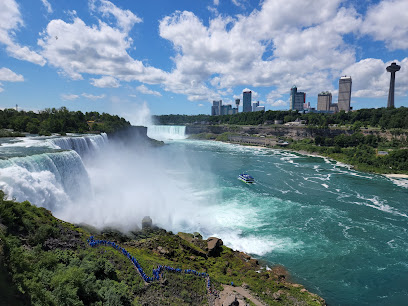
Fallsview Tourist Area
Discover the breathtaking Fallsview Tourist Area in Niagara Falls, Ontario, where stunning views, thrilling attractions, and vibrant entertainment await.
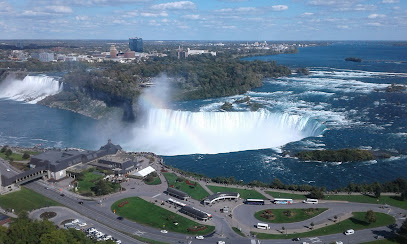
Maid of the Mist
Discover the breathtaking views and iconic experience of the Maid of the Mist at Niagara Falls, where adventure meets natural wonder.
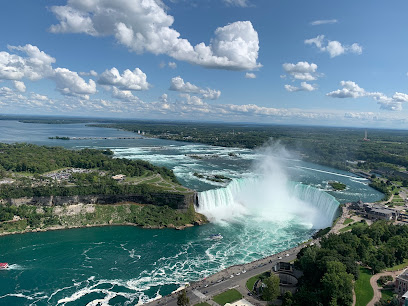
Niagara SkyWheel
Discover the breathtaking views of Niagara Falls from the iconic Niagara SkyWheel, a must-see attraction in Clifton Hill.
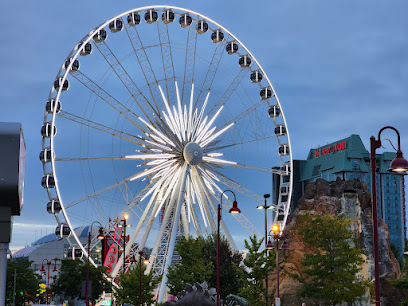
Cave of the Winds
Experience the thrilling power of Niagara Falls at the Cave of the Winds, where nature's beauty meets adventure in an unforgettable setting.
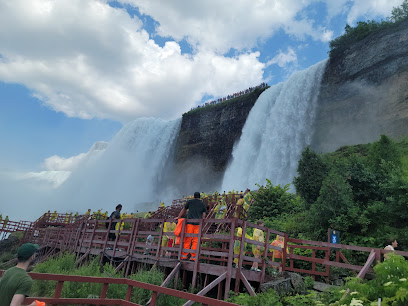
Horseshoe Falls of Canada
Discover the breathtaking beauty and powerful majesty of Horseshoe Falls, a world-renowned natural wonder located in Niagara Falls, Ontario, Canada.
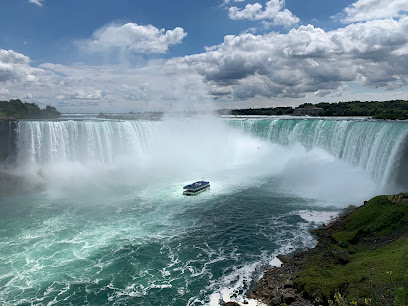
Journey Behind the Falls
Discover the breathtaking views and exhilarating experience of Niagara Falls at Journey Behind the Falls, a must-visit attraction for every tourist.
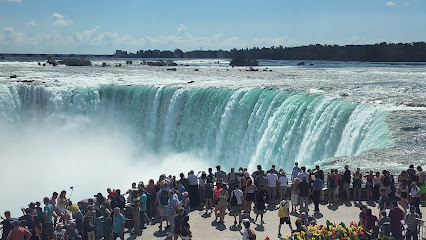
Skylon Tower
Discover breathtaking views of Niagara Falls from Skylon Tower's observation deck and indulge in exquisite dining high above the breathtaking landscape.
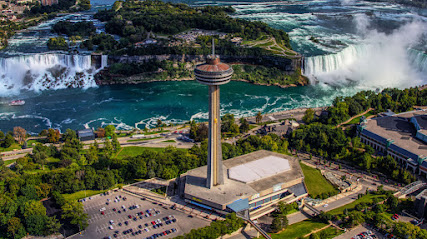
Rainbow International Bridge
Experience breathtaking views and the thrill of crossing borders at the Rainbow International Bridge, a must-see landmark near Niagara Falls.
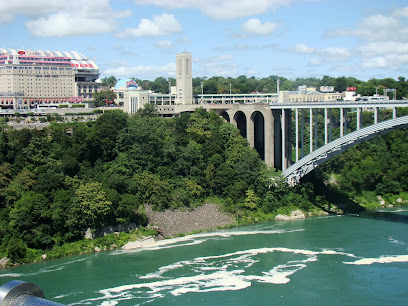
Whirlpool Aero Car
Discover breathtaking views of the Niagara River whirlpools from the iconic Whirlpool Aero Car, a unique aerial experience in Niagara Falls.
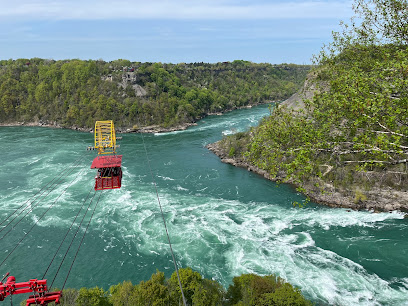
White Water Walk
Discover the thrill of nature at White Water Walk, where you can witness the majestic rapids of the Niagara River up close.
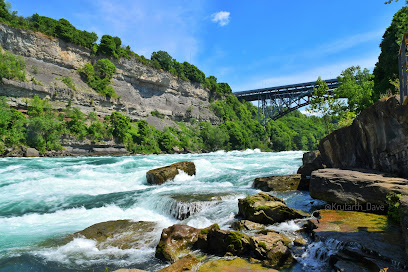
Niagara Falls Observation Tower
Experience breathtaking views of Niagara Falls from the Observation Tower, an iconic attraction showcasing nature's power and beauty.
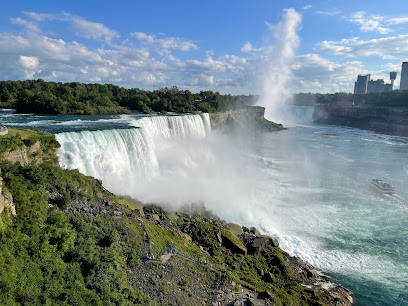
Great Canadian Midway
Discover endless fun and excitement at the Great Canadian Midway, an amusement center filled with games, rides, and unforgettable experiences in Niagara Falls.
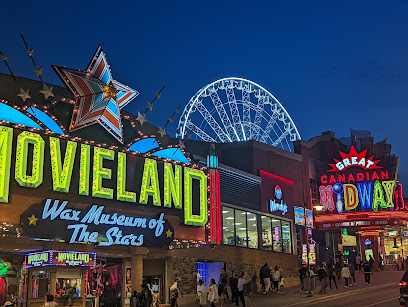
Niagara Glen Nature Centre
Discover the breathtaking beauty of Niagara Glen Nature Centre, a natural paradise along the Niagara River with stunning landscapes and outdoor adventures.
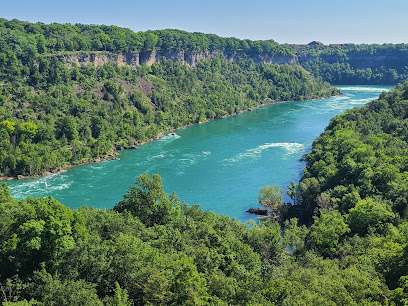
Floral Clock
Immerse yourself in the beauty of nature at the Floral Clock, a breathtaking living masterpiece on the scenic Niagara Parkway.
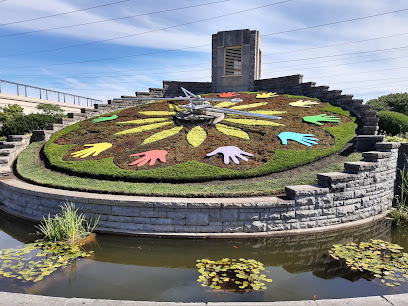
Unmissable attractions to see
Niagara Falls State Park
Experience the breathtaking beauty of Niagara Falls State Park with stunning views, diverse activities, and nature's wonders at your fingertips.

Fallsview Casino Resort
Discover Fallsview Casino Resort in Niagara Falls: A premier casino, hotel, and buffet dining experience with breathtaking views and endless entertainment.
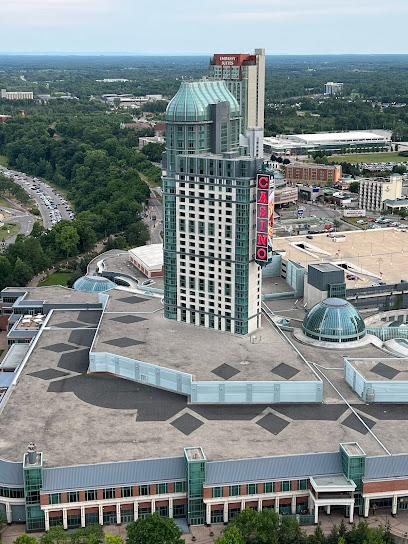
Maid of the Mist
Discover the exhilarating journey aboard the Maid of the Mist, where you experience the breathtaking beauty of Niagara Falls up close.
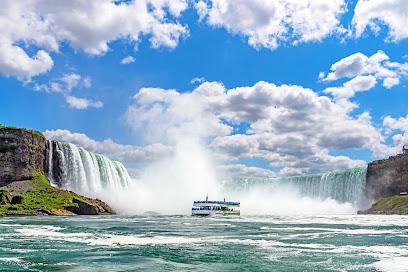
Niagara SkyWheel
Discover breathtaking views at the Niagara SkyWheel, a must-visit attraction in Clifton Hill for an unforgettable experience overlooking the iconic Niagara Falls.
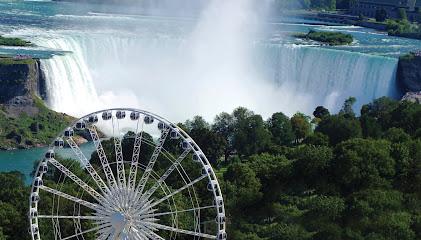
Journey Behind the Falls
Experience the breathtaking beauty and power of Niagara Falls from behind the cascading waters at Journey Behind the Falls.
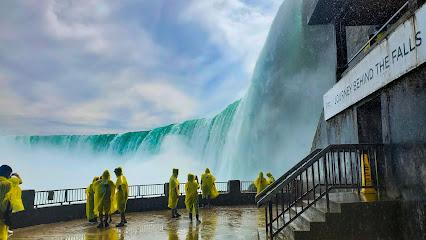
Skylon Tower
Experience breathtaking views and fine dining at Skylon Tower, the iconic observation deck overlooking Niagara Falls.
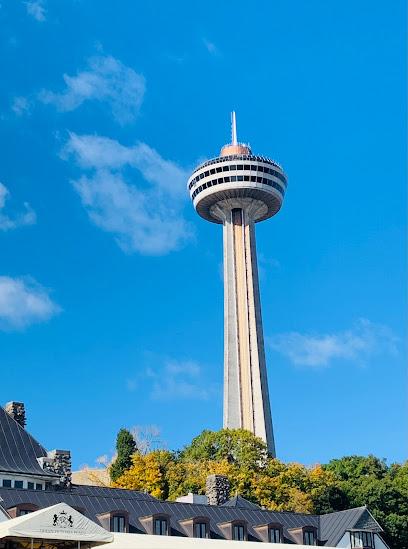
Cave of the Winds
Discover the exhilarating Cave of the Winds at Niagara Falls, where adventure meets breathtaking natural beauty in an unforgettable experience.
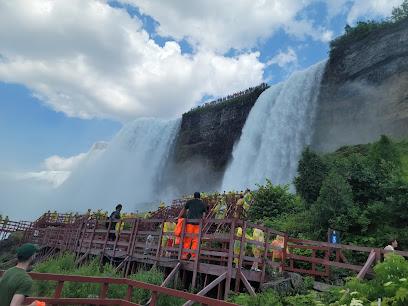
Horseshoe Falls of Canada
Discover the awe-inspiring Horseshoe Falls, a natural wonder in Niagara Falls, Canada, renowned for its breathtaking beauty and powerful cascading waters.
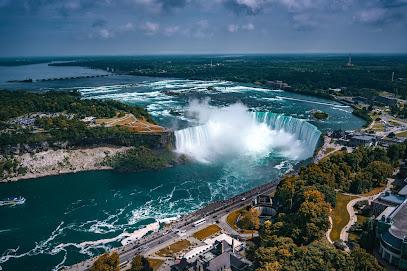
Niagara City Cruises
Immerse yourself in the breathtaking beauty of Niagara Falls with an unforgettable cruise experience at Niagara City Cruises in Ontario.
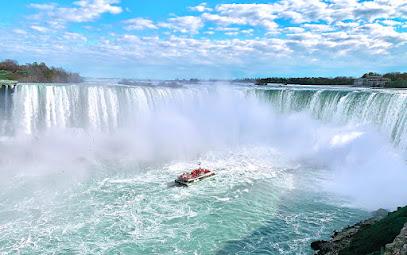
Butterfly Conservatory
Explore the mesmerizing Butterfly Conservatory in Niagara Falls, a tropical paradise filled with thousands of butterflies in a stunning natural setting.
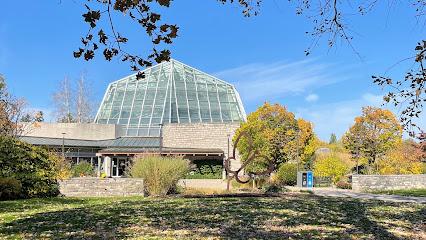
Rainbow International Bridge
Experience breathtaking views and a unique connection between Canada and the USA at the iconic Rainbow International Bridge, overlooking Niagara Falls.
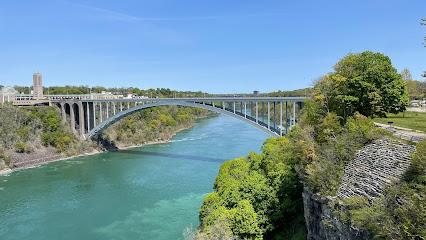
Whirlpool Aero Car
Experience the breathtaking aerial views of Niagara Falls' Whirlpool from the iconic Whirlpool Aero Car, a must-visit attraction for all thrill-seekers.
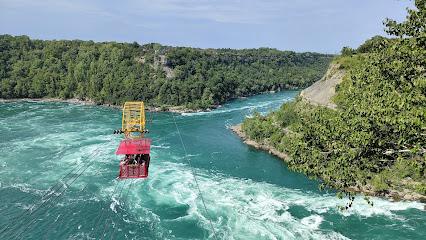
KeyBank Center
Explore Buffalo's premier venue for sports, concerts, and events at KeyBank Center, a must-visit destination for tourists seeking entertainment.
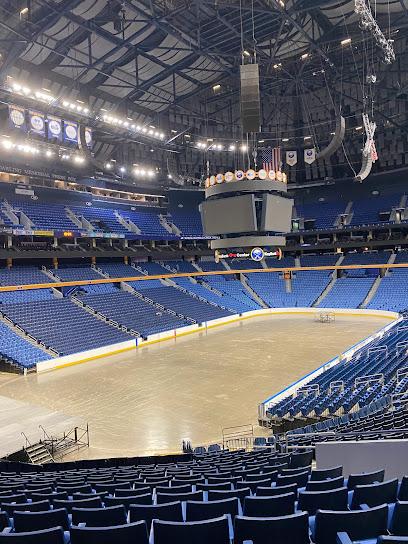
Aquarium of Niagara
Discover the diverse marine life of the Aquarium of Niagara, a top tourist attraction featuring interactive exhibits and captivating sea life displays.
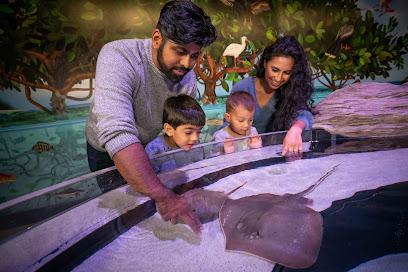
Casino Niagara
Casino Niagara: A premier gaming and entertainment destination in Niagara Falls, offering excitement, dining, and unforgettable experiences.
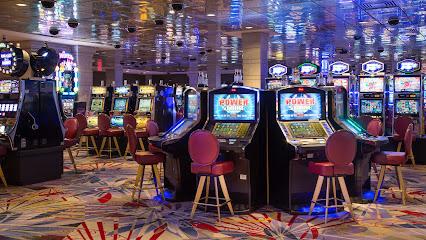
Essential places to dine
Flying Saucer Restaurant
Discover a delightful fusion of fun and flavor at Flying Saucer Restaurant - where every meal is out-of-this-world!
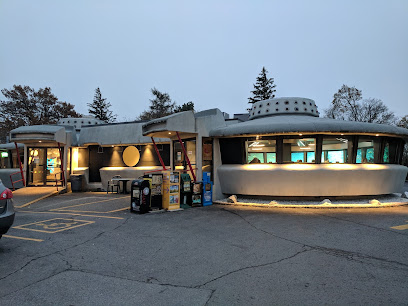
Antica Pizzeria & Ristorante
Experience authentic Italian cuisine at Antica Pizzeria & Ristorante in Niagara Falls—where every slice tells a story.
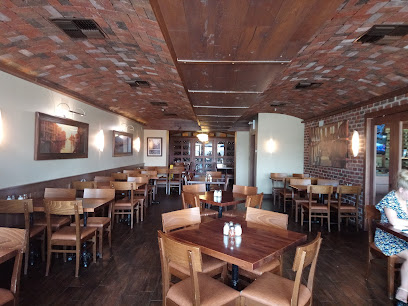
Chuck's Roadhouse Bar & Grill
Experience the best of grilled cuisine at Chuck's Roadhouse Bar & Grill in Niagara Falls - perfect for families and food lovers alike.
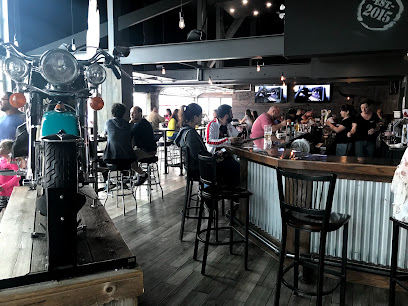
Rainforest Cafe Niagara Falls
Discover the exotic allure of Rainforest Cafe Niagara Falls – where family dining meets jungle adventure amidst delicious American cuisine.
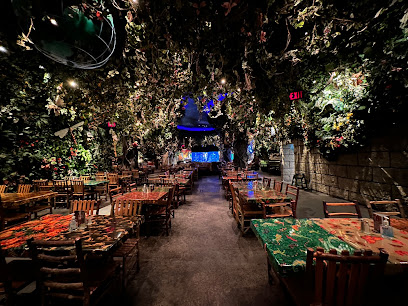
Taco N Tequila
Experience authentic Mexican cuisine at Taco N Tequila in Niagara Falls—where every meal is a celebration of flavor.
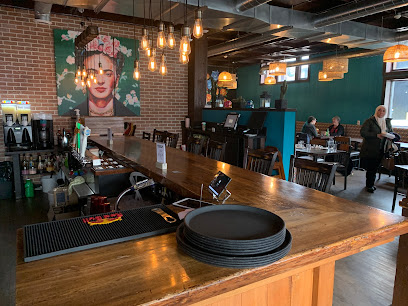
Copacabana Brazilian Steakhouse - Niagara
Savor authentic Brazilian flavors at Copacabana Brazilian Steakhouse in Niagara Falls—an unforgettable culinary experience awaits!
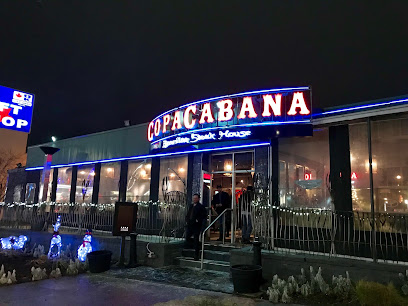
The WORKS Craft Burgers & Beer
Discover gourmet burgers and craft beer at The WORKS Craft Burgers & Beer in Niagara Falls—a must-visit destination for food lovers.
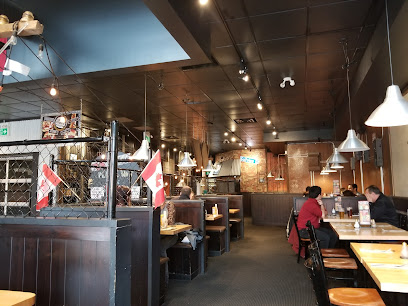
Brasa Brazilian Steakhouse
Experience authentic Brazilian cuisine at Brasa Brazilian Steakhouse in Niagara Falls – where every meal is a celebration of flavor.
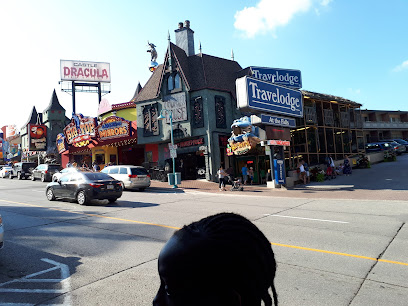
Hard Rock Cafe
Indulge in delicious American cuisine at Hard Rock Cafe Niagara Falls with stunning views and a vibrant atmosphere celebrating music history.
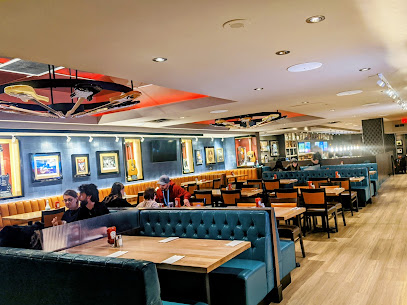
Mick & Angelo's Kitchen + Bar
Experience authentic Italian dining at Mick & Angelo's Kitchen + Bar in Niagara Falls—where every meal is a delightful celebration of flavor.
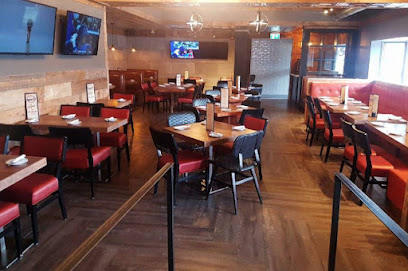
Doc Magilligan's Restaurant & Irish Pub
Discover the flavors of Ireland at Doc Magilligan's Restaurant & Irish Pub, where hearty meals and unique drinks await in Niagara Falls.
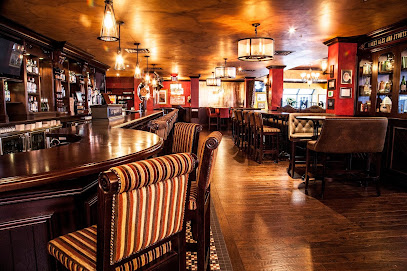
Johnny Rocco's Italian Grill
Experience authentic Italian flavors at Johnny Rocco's Italian Grill in Niagara Falls - where every meal is a celebration of culinary tradition.
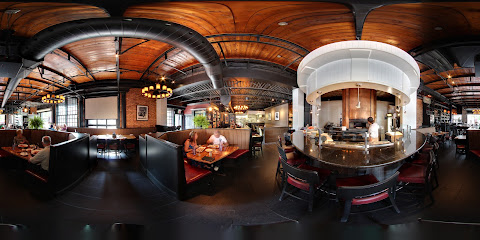
Remingtons of Niagara
Discover fine dining at Remingtons of Niagara - where expertly prepared steaks meet exceptional service in an elegant setting.
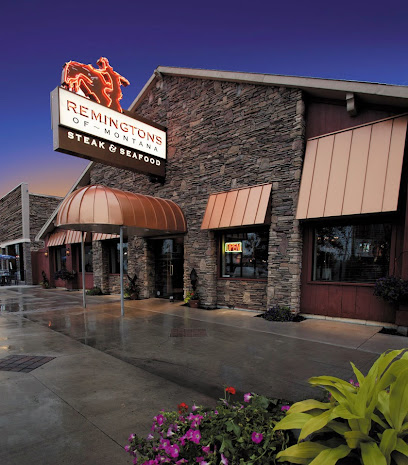
Tide and Vine Oyster House
Experience culinary excellence at Tide and Vine Oyster House, where fresh seafood meets innovative dining in the heart of Niagara Falls.

Massimo’s Italian Fallsview Restaurant
Savor authentic Italian flavors while enjoying breathtaking views of Niagara Falls at Massimo's Italian Fallsview Restaurant.
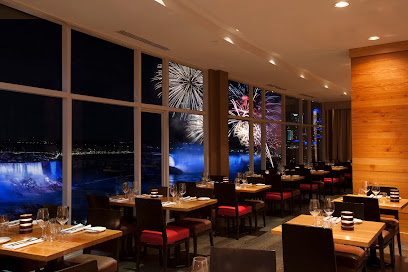
Markets, malls and hidden boutiques
Canada One
Discover incredible deals at Canada One, the premier outlet mall in Niagara Falls, featuring a variety of stores for the entire family.
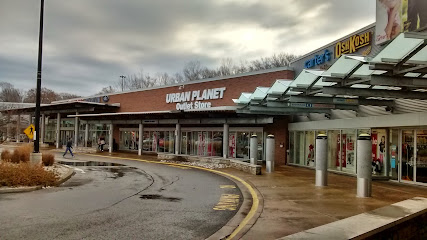
Hershey's Chocolate World
Experience the ultimate chocolate adventure at Hershey's Chocolate World, where sweet dreams come true in the heart of Niagara Falls.
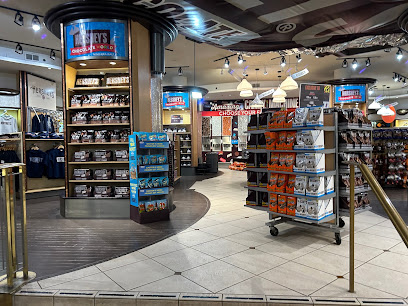
Niagara Duty Free Shops
Shop smart at Niagara Duty Free – unbeatable prices on beauty products, liquors, and more, just steps from the stunning Niagara Falls.
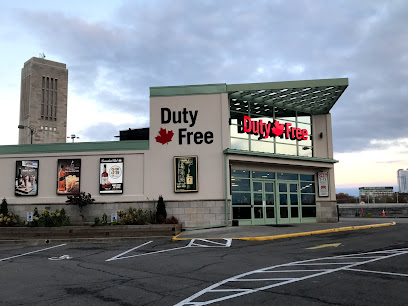
Unlimited 716 LLC
Shop for unique souvenirs and gifts at Unlimited 716 LLC, the perfect stop for tourists in Niagara Falls seeking to capture their memories.
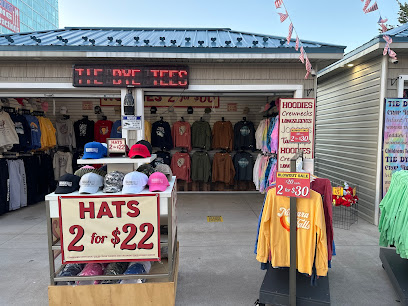
Fudge Factory
Discover the Fudge Factory in Niagara Falls, where handmade chocolates and delicious fudge await every sweet tooth.
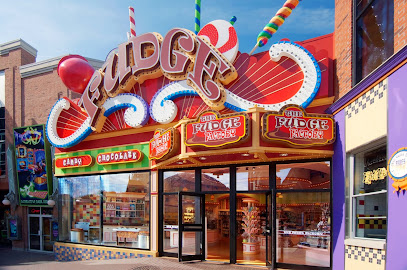
Made In America Store Souvenir & Gift Shop *SECOND FLOOR*
Explore the Made In America Store in Niagara Falls for unique gifts and souvenirs that celebrate American craftsmanship and culture.
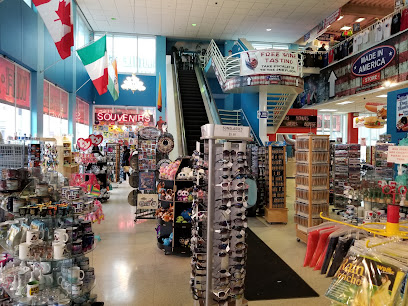
Canada Trading Company
Discover unique souvenirs and gifts at Canada Trading Company, your go-to store for T-shirts and local treasures in Niagara Falls.

Grand View Marketplace
Explore Grand View Marketplace – your go-to destination for unique gifts and local crafts in the heart of Niagara Falls.
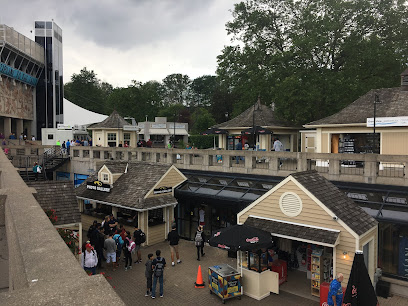
la Vie en Rose Canada One Factory Outlet
Explore stylish lingerie and swimwear at la Vie en Rose Canada One Factory Outlet in Niagara Falls - where chic meets affordable fashion.
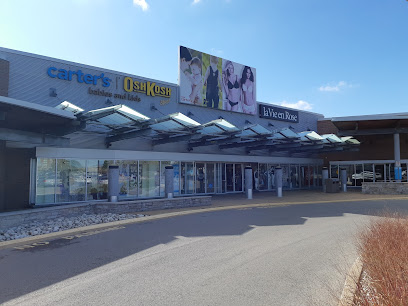
Evergreen Thrift Store
Explore Evergreen Thrift Store in Niagara Falls for unique finds, vintage treasures, and budget-friendly shopping experiences.
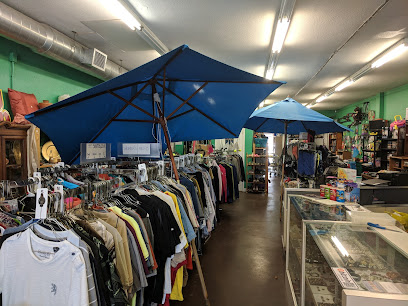
Grand Bazaar Niagara
Discover unique gifts, delicious food, and family-friendly fun at Grand Bazaar Niagara, your go-to destination in Niagara Falls.
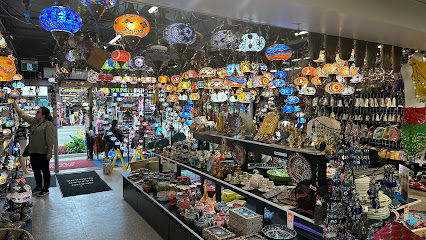
Stok'd Cannabis | Niagara Falls Cannabis Dispensary
Explore Stok'd Cannabis in Niagara Falls for a unique selection of quality cannabis products and accessories in a vibrant atmosphere.
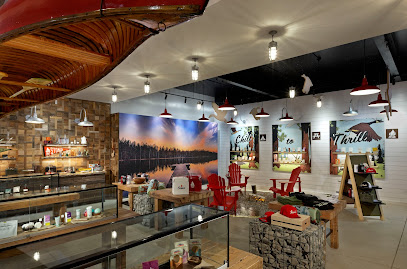
Peoples Discount Souvenirs
Discover unique souvenirs and local treasures at Peoples Discount Souvenirs, offering unbeatable prices and a wide selection in Niagara Falls.
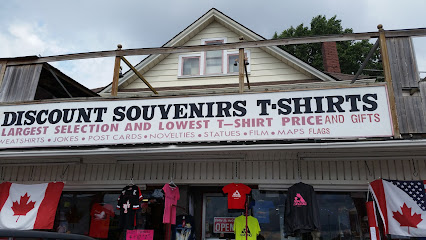
Always Refreshing Soda Shop
Indulge in delightful treats and unique souvenirs at Always Refreshing Soda Shop, a must-visit spot in the heart of Niagara Falls.
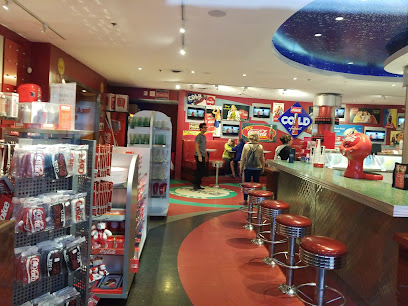
ROCKWORLD
Shop trendy clothing and accessories at RockWorld, the premier clothing store in the heart of Niagara Falls, reflecting local culture and style.
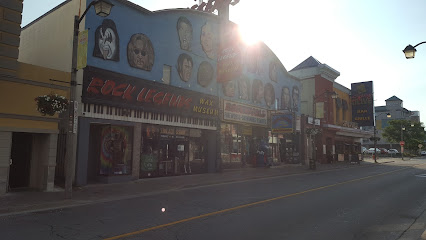
Essential bars & hidden hideouts
Doc Magilligan's Restaurant & Irish Pub
Discover the charm of Ireland at Doc Magilligan's Restaurant & Irish Pub, where great food, drinks, and live music create an unforgettable experience in Niagara Falls.
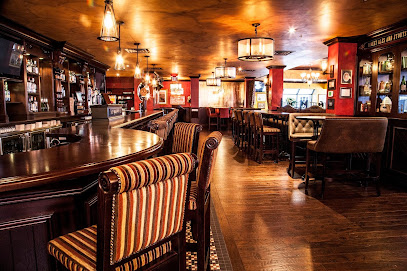
Taps Brewhouse
Discover Taps Brewhouse: A vibrant brewery in Niagara Falls, offering craft beers, delicious food, and lively entertainment in a welcoming atmosphere.
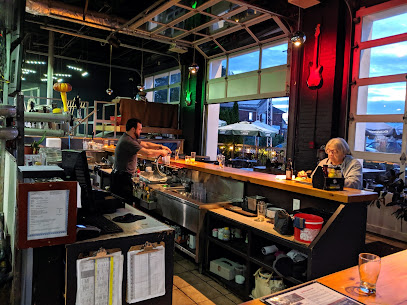
Clancy's Restaurant and Bar
Discover Clancy's Restaurant and Bar in Niagara Falls, where delicious food meets exciting sports in a lively atmosphere.
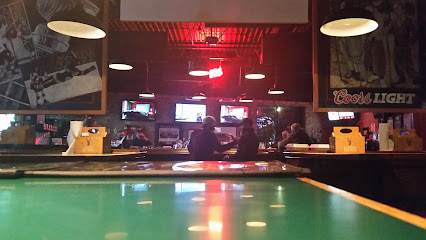
Yank's Old Niagara Bar & Grill
Experience the taste of Niagara Falls at Yank's Old Niagara Bar & Grill, serving delicious chicken wings, pizza, and drinks in a relaxed atmosphere.
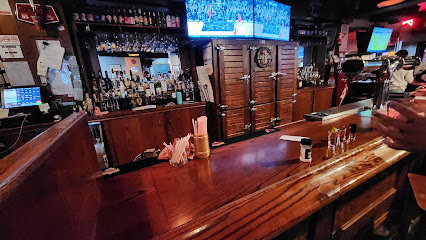
Wine on Third Bistro & Bar
Discover a vibrant dining experience at Wine on Third Bistro & Bar in Niagara Falls, offering exquisite wines and delightful small plates in a cozy ambiance.
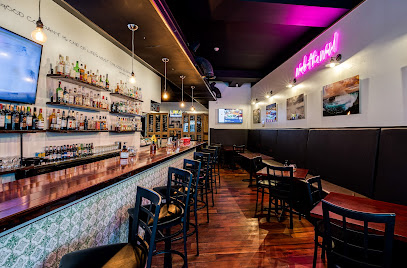
Hooligans Sports Bar
Experience the thrill of sports and delicious dining at Hooligans Sports Bar, Niagara Falls' go-to spot for fans and food lovers.
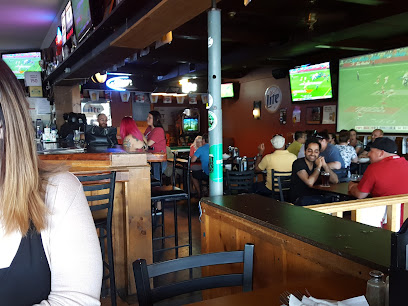
Big Texas Niagara
Experience the vibrant nightlife of Niagara Falls at Big Texas Niagara, a lively bar and live music venue offering great food and entertainment.
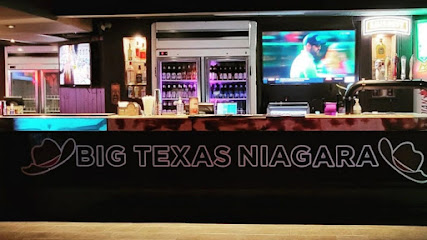
Mojito House Bar & Restaurant
Experience the vibrant nightlife at Mojito House Bar & Restaurant, where refreshing cocktails meet lively entertainment near Niagara Falls.
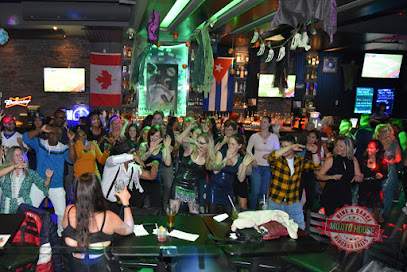
Spyce Lounge
Unwind at Spyce Lounge - a lively spot in Niagara Falls for cocktails, live music, and unforgettable nightlife experiences.

Local.
Experience the lively atmosphere and exquisite drinks at Niagara Falls' favorite local bar, a perfect spot for unwinding after adventure.
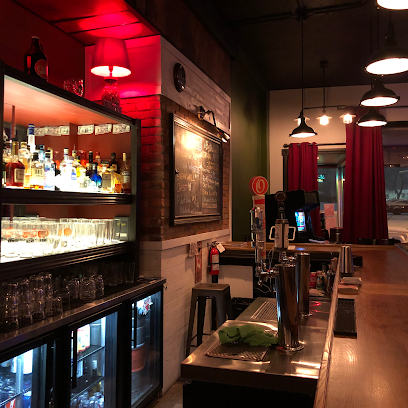
The Beer Garden
Experience the vibrant nightlife of Niagara Falls at The Beer Garden, where karaoke meets a lively atmosphere and great drinks.
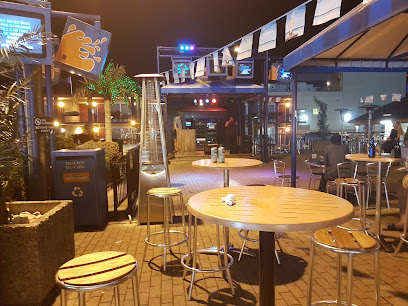
Camp Cataract
Discover Camp Cataract, a lively bar in Niagara Falls offering delicious food, creative cocktails, and fantastic live music for an unforgettable night out.
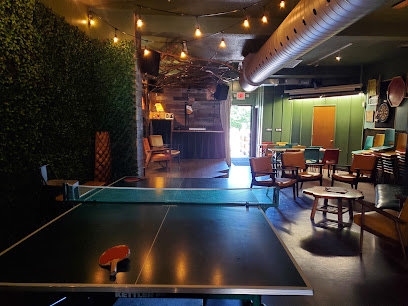
Blue Lagoon
Experience the lively ambiance and diverse drink selection at Blue Lagoon, the perfect bar for unwinding in Niagara Falls.
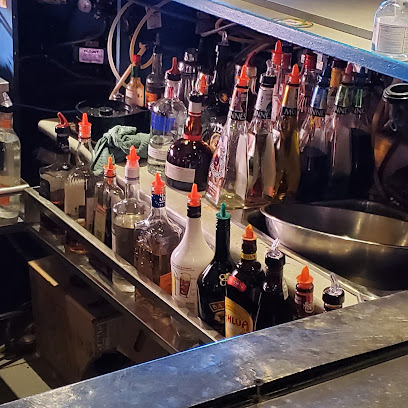
Maple Leaf Tavern
Discover the lively Maple Leaf Tavern in Niagara Falls, a perfect blend of great food, live music, and a welcoming atmosphere for all visitors.
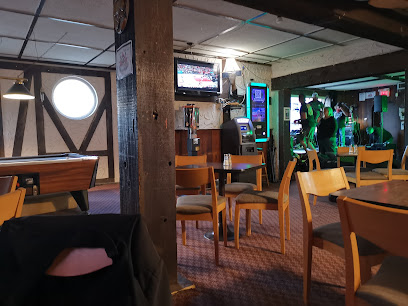
Turnpike 420 Pub & Eatery
Discover the warm, inviting atmosphere of Turnpike 420 Pub & Eatery in Niagara Falls, where delicious food and great drinks await.
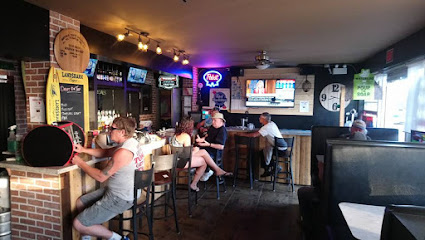
Local Phrases
-
- HelloBonjour
[bon-zhoor] - GoodbyeAu revoir
[oh re-vwahr] - YesOui
[wee] - NoNon
[nohn] - Please/You're welcomeS'il vous plaît/De rien
[seel voo pleh/day ree-ehn] - Thank youMerci
[mehr-see] - Excuse me/SorryExcusez-moi/Désolé
[ex-koo-zay mwah/deh-zoh-lay] - How are you?Comment ça va?
[koh-mohn sah vah] - Fine. And you?Bien. Et toi?
[byen/eh twah] - Do you speak English?Parlez-vous anglais?
[par-lay voo ahn-glay] - I don't understandJe ne comprends pas
[zhuh nuh kohm-prahnd pah]
- HelloBonjour
-
- I'd like to see the menu, pleaseJe voudrais voir le menu, s'il vous plaît
[zhuh voo-dray vwah-ahr luh meh-noo/seel voo pleh] - I don't eat meatJe ne mange pas de viande
[zhuh nuh mahnj pah duh vyand] - Cheers!Santé!
[sahn-tay] - I would like to pay, pleaseJe voudrais payer, s'il vous plaît
[zhuh voo-dray pay-yay/seel voo pleh]
- I'd like to see the menu, pleaseJe voudrais voir le menu, s'il vous plaît
-
- Help!Au secours!
[oh seh-koor] - Go away!Allez-vous en!
[ah-lay voo zahn] - Call the Police!Appelez la police!
[ah-peh-lay lah poh-leece] - Call a doctor!Appelez un médecin!
[ah-peh-lay uh meh-deh-sahn] - I'm lostJe suis perdu
[zhuh swee pair-doo] - I'm illJe suis malade
[zhuh swee mah-lahd]
- Help!Au secours!
-
- I'd like to buy...Je voudrais acheter...
[zhuh voo-dray zah-shtay] - I'm just lookingJe regarde juste
[zhuh ruh-gahrd zhuhst] - How much is it?Combien ça coûte?
[kohm-byen sah koot] - That's too expensiveC'est trop cher
[say troh shayr] - Can you lower the price?Pouvez-vous baisser le prix?
[poo-veh voo beh-say luh pree]
- I'd like to buy...Je voudrais acheter...
-
- What time is it?Quelle heure est-il?
[kell uhr eh-teel] - It's one o'clockIl est une heure
[eel eh oon uhr] - Half past (10)Dix et demie
[dees ay duh-mee] - MorningMatin
[mah-tahn] - AfternoonAprès-midi
[ah-pray mee-dee] - EveningSoir
[swahr] - YesterdayHier
[yehr] - TodayAujourd'hui
[oh-zhoor-dwee] - TomorrowDemain
[duh-mahn] - 1Un
[uhn] - 2Deux
[duh] - 3Trois
[twah] - 4Quatre
[kah-truh] - 5Cinq
[sank] - 6Six
[sees] - 7Sept
[set] - 8Huit
[weet] - 9Neuf
[nurf] - 10Dix
[dees]
- What time is it?Quelle heure est-il?
-
- Where's a/the...?Où est le/la...?
[oo eh luh/luh] - What's the address?Quelle est l'adresse?
[kell eh lah-dress] - Can you show me (on the map)?Pouvez-vous me montrer (sur la carte)?
[poo-veh voo muh mohn-tray/sewr lah kart] - When's the next (bus)?Quand est le prochain (bus)?
[kahn eh luh proh-shahn/bus] - A ticket (to ....)Un billet (pour ....)
[uhn bee-yay/poor]
- Where's a/the...?Où est le/la...?
History of Niagara Falls
-
Niagara Falls, a geological wonder, was formed approximately 12,000 years ago at the end of the last Ice Age. As the glaciers receded, they carved out the Great Lakes and the Niagara River. The relentless force of water flowing from Lake Erie to Lake Ontario created the falls, which continue to erode at a rate of about one foot per year.
-
Long before European settlers arrived, the area around Niagara Falls was inhabited by Indigenous peoples, including the Neutral, Seneca, and Mohawk nations. These groups revered the falls and considered them to be a spiritual and sacred site. The name 'Niagara' is believed to have originated from the Iroquoian word 'Onguiaahra,' meaning 'the strait.'
-
The first recorded European to visit Niagara Falls was French explorer Father Louis Hennepin in 1678. His vivid descriptions of the falls in his writings brought international attention to the majestic natural wonder. He estimated the height of the Horseshoe Falls to be around 600 feet, which was a significant overestimation.
-
Niagara Falls played a strategic role during the War of 1812 between the United States and British Empire. The region witnessed several key battles, including the Battle of Lundy's Lane in 1814, one of the bloodiest battles of the war. The area's turbulent history during this period is commemorated in various historical sites and monuments.
-
In the 19th century, Niagara Falls became a prominent tourist destination. The completion of the Erie Canal in 1825 made the falls more accessible to visitors. The first hotel, the Pavilion Hotel, was built in 1822, marking the beginning of a booming tourism industry. By mid-century, the area was attracting artists, writers, and honeymooners from around the world.
-
The late 19th and early 20th centuries saw the development of hydroelectric power at Niagara Falls. Pioneers like Nikola Tesla and George Westinghouse played crucial roles in harnessing the falls' immense energy. The construction of the Niagara Falls Power Company in 1895 marked the beginning of large-scale electricity generation, which powered industries and homes far beyond the local area.
-
Niagara Falls has a rich history of attracting thrill-seekers and daredevils. In 1901, Annie Edson Taylor became the first person to survive a trip over the falls in a barrel. Since then, numerous adventurers have attempted similar feats, some successful and others tragic. These daring acts have become an enduring part of the falls' lore.
-
In 1885, Niagara Falls State Park was established, making it the oldest state park in the United States. The park was designed by renowned landscape architect Frederick Law Olmsted. While the Canadian side, known as Queen Victoria Park, was established in 1887. Both parks offer stunning views and have preserved the natural beauty of the falls for future generations.
-
The 20th and 21st centuries have seen continued growth and modernization in Niagara Falls. The area has developed into a vibrant tourist hub with attractions like the Skylon Tower, Clifton Hill, and the Butterfly Conservatory. Efforts have been made to balance tourism with conservation, ensuring the falls remain a natural wonder for all to enjoy.
Niagara Falls Essentials
-
Niagara Falls is located in Ontario, Canada. The nearest major airport is Toronto Pearson International Airport, located about 125 kilometers away. From the airport, you can take a shuttle service, rent a car, or use public transportation to reach Niagara Falls. Another option is the Buffalo Niagara International Airport in New York, USA, approximately 45 kilometers away, but crossing the border may require additional documentation. VIA Rail Canada offers train services to Niagara Falls from various Canadian cities, and GO Transit provides bus and train services from Toronto.
-
Once in Niagara Falls, you can explore the city using several transportation options. The WEGO bus system is a convenient way to get around the main attractions. Taxis and rideshare services like Uber and Lyft are also available. If you prefer to drive, car rentals are an option, but parking can be expensive near the main attractions. Biking is another fun way to explore the area, especially along the scenic Niagara Parkway.
-
The official currency in Canada is the Canadian Dollar (CAD). Credit and debit cards are widely accepted in most hotels, restaurants, and shops. ATMs are readily available for cash withdrawals. It's advisable to carry some cash for small purchases or for use in areas where card payments might not be accepted. Currency exchange services are available at the airport, banks, and in the city.
-
Niagara Falls is generally a safe destination for tourists. However, it's wise to take standard precautions. Avoid walking alone at night in unfamiliar areas and keep an eye on your belongings in crowded places. While the main tourist areas are safe, be cautious in less populated neighborhoods, especially at night. Petty crimes like pickpocketing can occur, so stay vigilant.
-
In case of emergency, dial 911 for immediate assistance. Niagara Falls has a local police station, fire department, and medical facilities available. It is recommended to have travel insurance that covers medical emergencies. For minor health issues, there are pharmacies in the city where you can purchase over-the-counter medications.
-
Fashion: Do dress in layers as the weather can change quickly, especially near the falls. Avoid wearing expensive jewelry in crowded areas. Religion: Do respect all places of worship and adhere to their dress code requirements. Public Transport: Do be courteous and offer your seat to elderly or disabled passengers. Don't eat or drink on public transport. Greetings: Do greet people with a friendly 'hello' or a handshake. Eating & Drinking: Do try local specialties like poutine and butter tarts. Don't forget to tip, typically 15-20% in restaurants.
-
To experience Niagara Falls like a local, visit the Niagara Parks Botanical Gardens and Butterfly Conservatory for a tranquil escape. Head to Queen Street for a more authentic local dining and shopping experience. Try to catch the seasonal festivals and events that showcase local culture and traditions. Don't miss a wine-tasting tour in the nearby Niagara-on-the-Lake, renowned for its wineries and vineyards.
Trending Landmark in Niagara Falls
-
Niagara Falls State Park
-
Fallsview Tourist Area
-
Maid of the Mist
-
Niagara SkyWheel
-
Cave of the Winds
-
Horseshoe Falls of Canada
-
Journey Behind the Falls
-
Skylon Tower
-
Rainbow International Bridge
-
Whirlpool Aero Car
-
White Water Walk
-
Niagara Falls Observation Tower
-
Great Canadian Midway
-
Niagara Glen Nature Centre
-
Floral Clock
Nearby Cities to Niagara Falls
-
Things To Do in Buffalo Town
-
Things To Do in Buffalo
-
Things To Do in Toronto
-
Things To Do in Rochester
-
Things To Do in Erie
-
Things To Do in Ithaca
-
Things To Do in Syracuse
-
Things To Do in Youngstown
-
Things To Do in Cleveland
-
Things To Do in Akron
-
Things To Do in Pittsburgh
-
Things To Do in Canton
-
Things To Do in Weirton
-
Things To Do in Detroit
-
Things To Do in Scranton
















